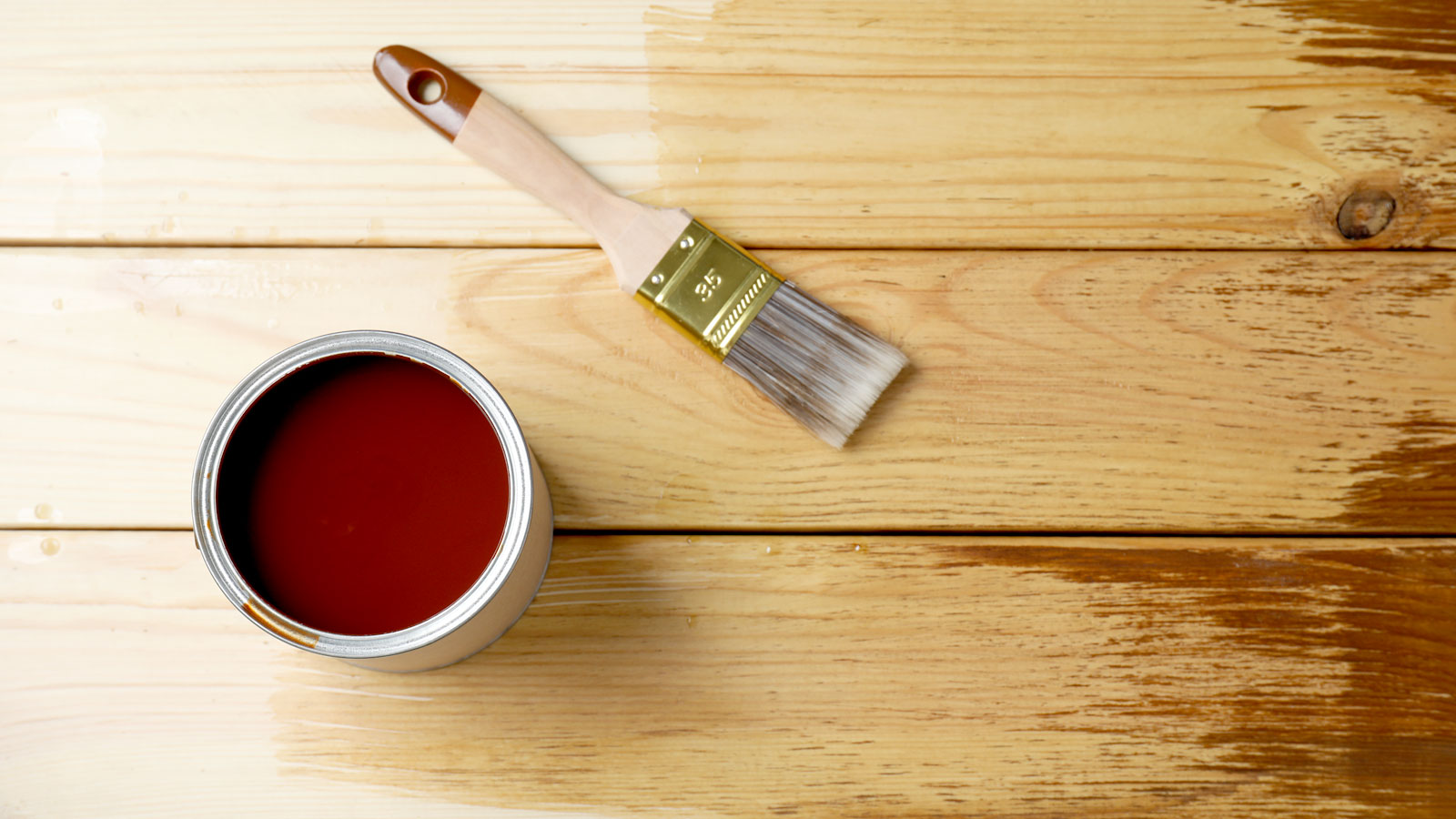Stain vs varnish: Which one should you use?
Stain vs varnish is a question you need to be asking if you are looking to treat wood floors and furniture. Here we help you decide what is best for your needs

Stain vs varnish is a choice you typically have to make when treating wood. For instance, are you looking to change the appearance of your wooden floors? Or perhaps you want to add a level of protection to help keep out moisture and dirt from your wooden furniture?
These are two common scenarios, but not only ones, where stain and varnish are the preferred choice. But what you choose may depend on what type of wood flooring, joinery or furniture you have, what finish you want, and how it's going to be used. Here the pros help you make the right choice for your project.
Stain vs varnish: When and where you should use them
Stain and varnish are both ideal for wooden floors and furniture, but they have different properties and uses. Brandon Walker, Construction manager at ASAP Restoration LLC delves into the best scenarios for both, starting with stain.

Brandon Walker has been in the painting and construction industry for more than 20 years. He cut his teeth as a teenage painter working for Walker Paint Masters doing commercial projects for Planet Hollywood and Elizabeth Arden’s Red Door Spa. After running his own company, he decided to advance his skills as a Superintendent with ASAP Restoration.
Where and when should I use stain?
“You should use stain anytime you need to protect a wood surface but you don’t want to cover it up with paint," shares Walker. “That said, you can also use varnish in these scenarios if you don’t want to tint the wood a new colour that isn’t already present in the grain.”
So why use wood stain? “Stain is commonly used to change the appearance of a particular wood. This can mean making softwoods look like hardwoods, or just covering up defects and damage in hardwoods in general.”
Now you know why stain is used, what and where it is typically applied. Walker explains: “The applications for stain are nearly endless, but most of the time it is used to amplify or enhance a wood product that people see often, such as flooring, bannisters, furniture and mantelpieces.”
What wood works well with stain?
Are all woods suitable for stain? What types of wood are best for staining? “Raw wood is a prime candidate for staining because it protects the wood, and it enhances the natural grain beauty that is already there to start.”
However, if you have an engineered wood floors or surfaces this will often already be stained as Walker explains: “Engineered hardwoods tend to come with a stain and sealant already embedded in them so this means that usually they don’t need any additional treatment.”
Elsewhere Walker suggests that: “Wood furniture will need a protective stain/sealant combo. It may require a varnish as well, to ensure that the outside layer of the wood doesn’t get damaged by the elements.”
He adds: “Hardwoods should really just be protected with sealant like varnish to allow the natural beauty of the wood to shine through, but softwoods will likely require both to make them look better and protect them from damage.”
Where and when should I use varnish?
Varnish is different to stain. “Stain penetrates the wood while varnish is a sealant that adheres to the top layer of the wood surface,” Walkers says, explaining the key difference. “Use varnish when you want to keep the natural colour of the wood intact without adding colour.”
Varnish is typically used on projects where, “people want to preserve the natural colours and grain of the wood surface.” He continues that: “It’s the common choice for projects like flooring, kitchen tables, end tables, desks, and anything else that requires protection, but not colour changes.”
Joseph Tauscher, production coordinator at remodelling company Lamont Bros adds: “Some varnishes can be tinted, but they are generally clear and protect against moisture, wear, and UV light. For any project involving wood, always add a protective finish like varnish to ensure longevity and durability.”
Can stain and varnish be used together?
The simple answer is yes, with a host of scenarios you could use these two together. Why? Walker keeps it simple and to the point: “Stain will provide the colour and varnish will provide the protection.”
“A coffee table is a good example of a wood surface that may need both stain and varnish to get the best results. The stain may be needed if the wood is less than ideal looking, and the varnish will be needed to protect the surface because coffee tables get a lot of use.”
But how do you apply them so they work together cohesively? Tauscher explains: “Typically, you would first apply the stain to achieve the desired colour, let it dry for 12-24 hours, and then apply a varnish or other top coat to protect both the wood and the colour.”
He adds: “It’s essential to ensure compatibility between the products, especially when mixing oil-based and water-based finishes. When done correctly, this combination can enhance the appearance and durability of wooden surfaces."
FAQs
Do I need to remove varnish before staining?
Varnish provides a hard-wearing protective layer that helps repel dirt, stain and water, so you cannot add a stain directly on top of a layer of varnish. If you do it will quickly flake off, or if on floors footfall will cause it to be scuffed off quickly.
Ideally you want to remove the layer of varnish before you add a stain to get the full effect of the stain. However, you can sand off the shine of the varnish and apply the stain, but it's unlikely you will get quite the same finish as going back to bare wood.
Does stain and varnish make wood waterproof?
Varnish provides a layer that sits on top of the wood which helps repel water, effectively making it waterproof. Stain works slightly different and soaks into the wood fibres, and will offer a level of water resistance rather than being waterproof.
If you are going to stain or varnish wood there’s a very good chance you will be sanding wood before you add either. If refreshing a floor, again there’s a good chance you will be sanding floorboards ready for a new finish. Check out our staining wood floors guide if looking to add a new colour to your floor.
Get the Homebuilding & Renovating Newsletter
Bring your dream home to life with expert advice, how to guides and design inspiration. Sign up for our newsletter and get two free tickets to a Homebuilding & Renovating Show near you.
Steve Jenkins is a freelance content creator with over two decades of experience working in digital and print and was previously the DIY content editor for Homebuilding & Renovating.
He is a keen DIYer with over 20 years of experience in transforming and renovating the many homes he has lived in. He specialises in painting and decorating, but has a wide range of skills gleaned from working in the building trade for around 10 years and spending time at night school learning how to plaster and plumb.
He has fitted kitchens, tiled bathrooms and kitchens, laid many floors, built partition walls, plastered walls, plumbed in bathrooms, worked on loft conversions and much more. And when he's not sure how to tackle a DIY project he has a wide network of friends – including plumbers, gas engineers, tilers, carpenters, painters and decorators, electricians and builders – in the trade to call upon.

